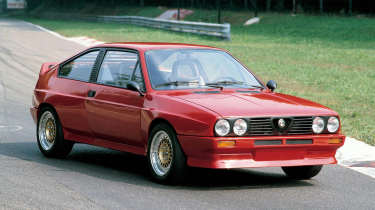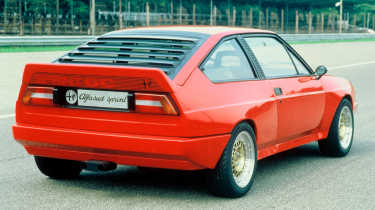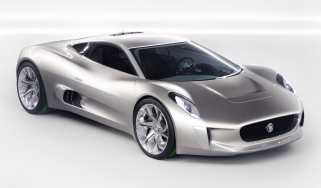Alfa Romeo Alfasud Sprint 6C - dead on arrival
In 1982 Alfa Romeo showed off a widebody, mid-engined Alfasud destined for Group B rallying. Here's why it never came to fruition
In October 1980, while the FIA was announcing the finalised rules for its new Group B rally class, representatives from Alfa Romeo were in Tokyo signing a joint-venture deal with Nissan for a new small hatchback. Soon afterwards the former started to seem like an interesting opportunity for the latter, what with Group B coming into effect in 1982 and the new Datsun-based hatchback scheduled to go on sale soon afterwards. The timing was excellent. The car, however, was not because it was the eternally underwhelming Arna, a model which Alfa engineers swiftly decided was not suitable for motorsport. Still determined to go rallying, however, they hatched a Group B plan B, based around the ageing Alfasud Sprint.
At the Paris Motor Show in October 1982 the new rally machine made its debut. It wore the freshened-up nose and tail lights of the upcoming Sprint facelift, rescuing some marketing capital from the decision not to rally the Arna, but the really interesting stuff was everything in between. As the name implied, the 6C had ditched the Sprint’s usual front-mounted four-cylinder boxer engine in favour of a V6 which sat behind the front seats, driving the rear wheels through the same five-speed ZF ‘box found in the Lancia 037.
To reflect the uptick in grunt there were fat Pirelli P7s contained within butch box arches and, at the back, a slatted cover where the rear window used to be, all the better to keep that 2.5-litre V6 at a comfortable temperature. Inside, Alfa had given the car richly upholstered black leather seats, a smart Momo steering wheel, and carpets to match the racing red paintwork. It looked every inch the 200-off homologation special.
There were, however, a couple of issues that loomed over the Sprint 6C. First of all, the engine. As announced, the ‘Stradale’ version made 160 horsepower giving it a brisk but not blistering 0-62 time of 7.3 seconds and a top speed of 133mph. Alfa’s competitions arm, Autodelta, had been running the same engine in GTV6 touring cars and knew it could be tuned up to 230 horsepower for racing but even that wouldn’t be enough for Group B. That’s why they cannily increased the capacity a fraction, from 2480cc to 2503cc, nudging the car into the 2500-2999cc sub-class so there was headroom to develop a 3-litre version of the same V6 with the hope of getting a slug more power in future.
The second issue with the rally Sprint was four-wheel-drive, or rather the lack of it. Mindful of this problem, Alfa quickly revealed a second 6C prototype with additional cooling slots, more aggressive aero, and a less luxurious interior featuring race seats, harnesses, and a gearlever that sat closer to the driver on a higher central tunnel. This was not done purely to enable faster changes at slithery speed on a special stage; the tunnel had been raised to make room for a propshaft.
This car ran an AWD-compatible Hewland gearbox too, but the second prototype was still rear-drive because cash-strapped Alfa Romeo couldn’t afford to engineer a system to send power to all four Pirellis. In fact, given the company’s impending financial ruin, it couldn’t afford to build the 6C at all and in 1983 the project was cancelled.
The idea of a mid-engined Sprint didn’t die, however, because in 1986 an Australian company called Giocattolo Motori decided to make its own version by modifying showroom Sprints, initially with an Alfa V6 in the middle and later using Holden-sourced 5-litre V8s. 15 were made before the company folded. As for the original 6Cs, the first prototype lurks in a dark corner of the storage bunker under the Alfa Romeo museum while the second has been restored and is on display upstairs as a reminder of Alfa’s broken Group B dreams. Still, at least it’s not an Arna.









